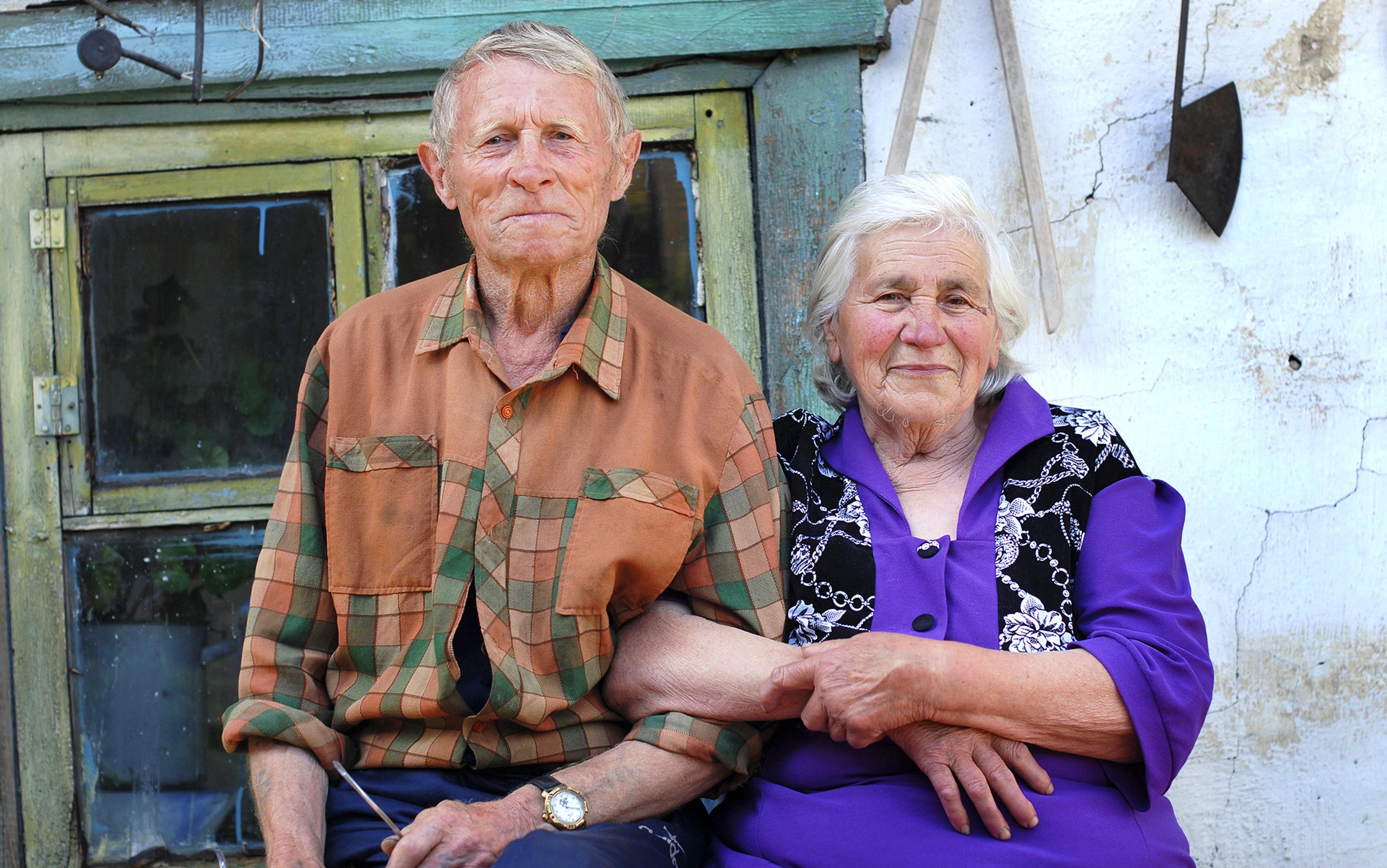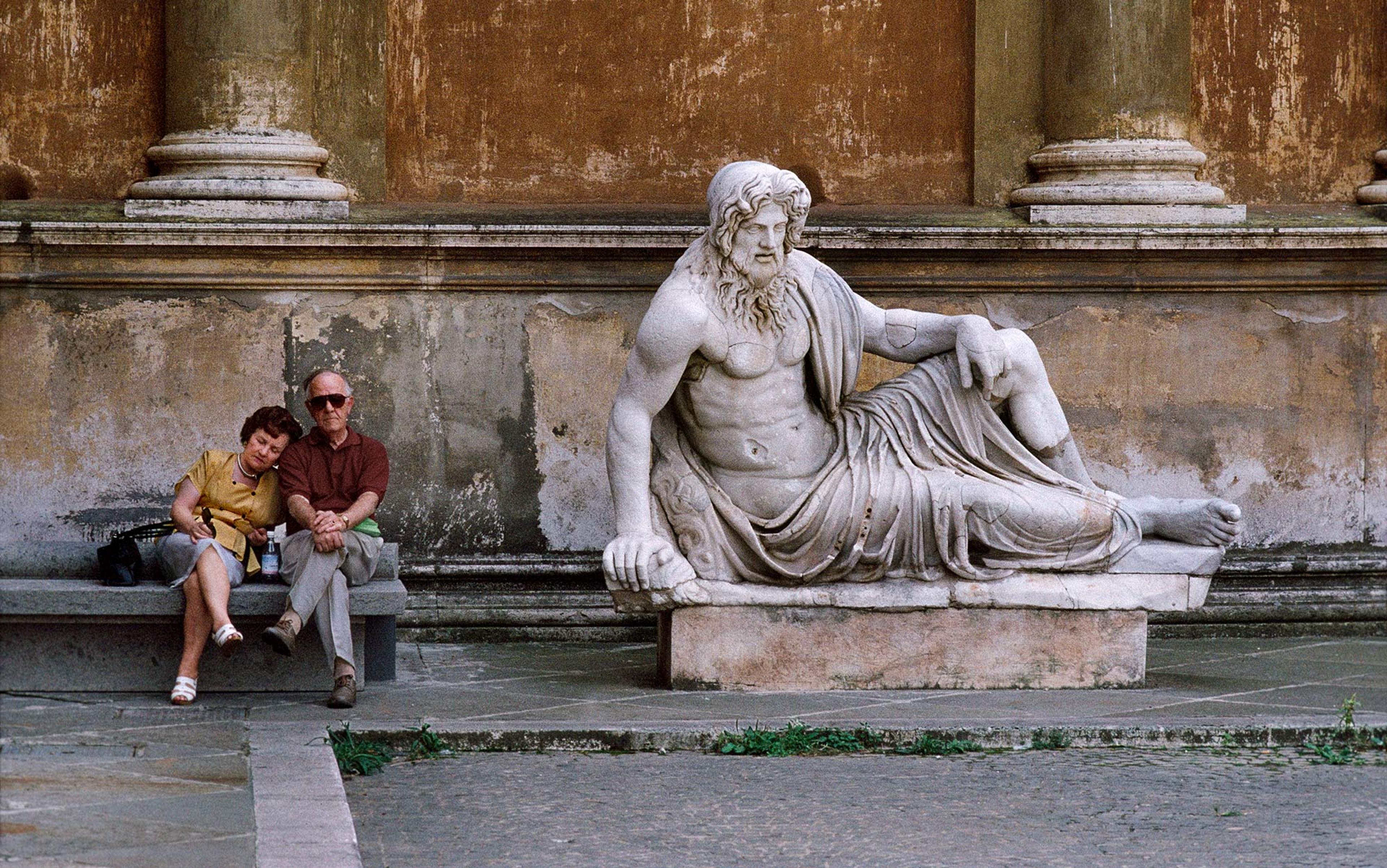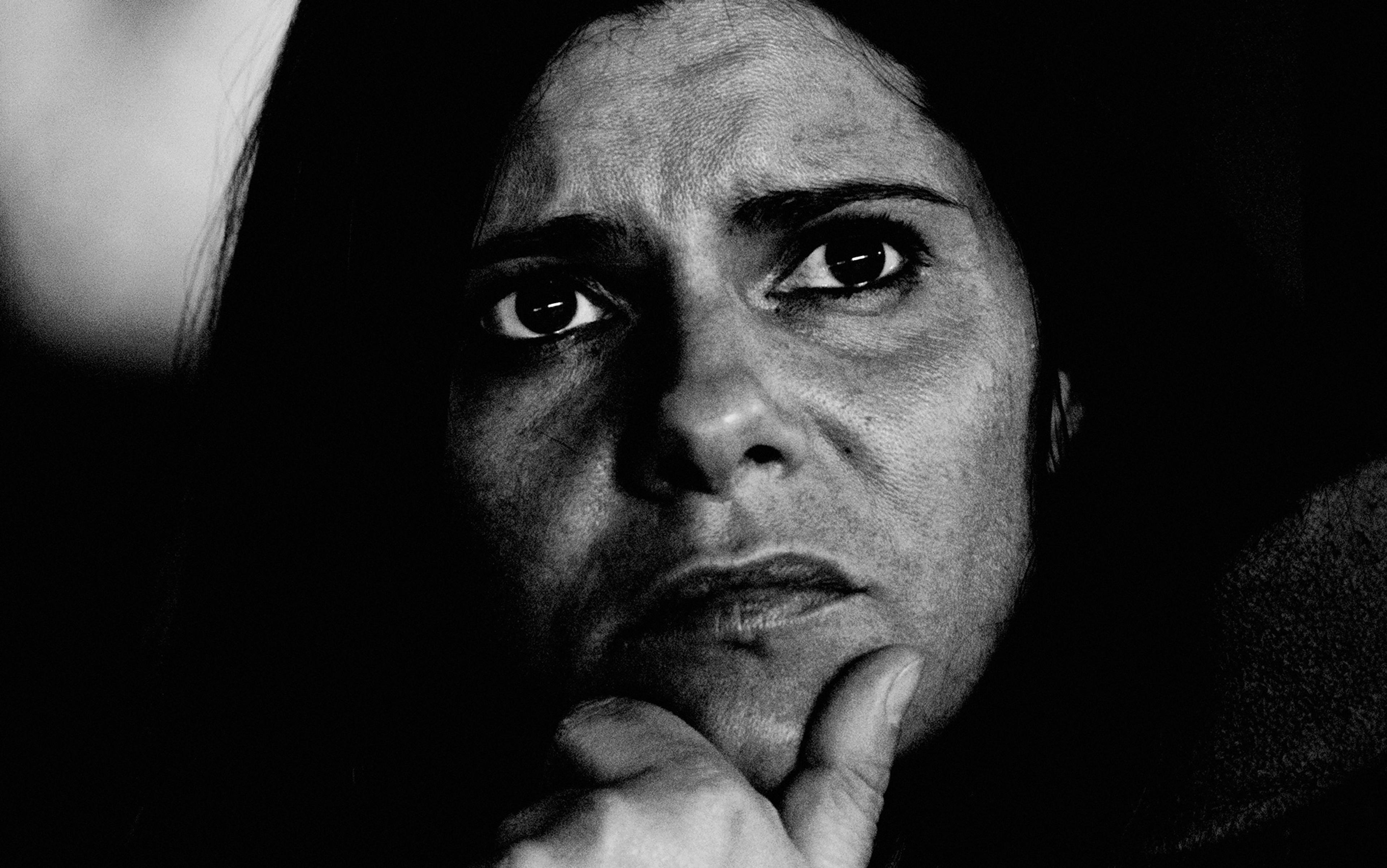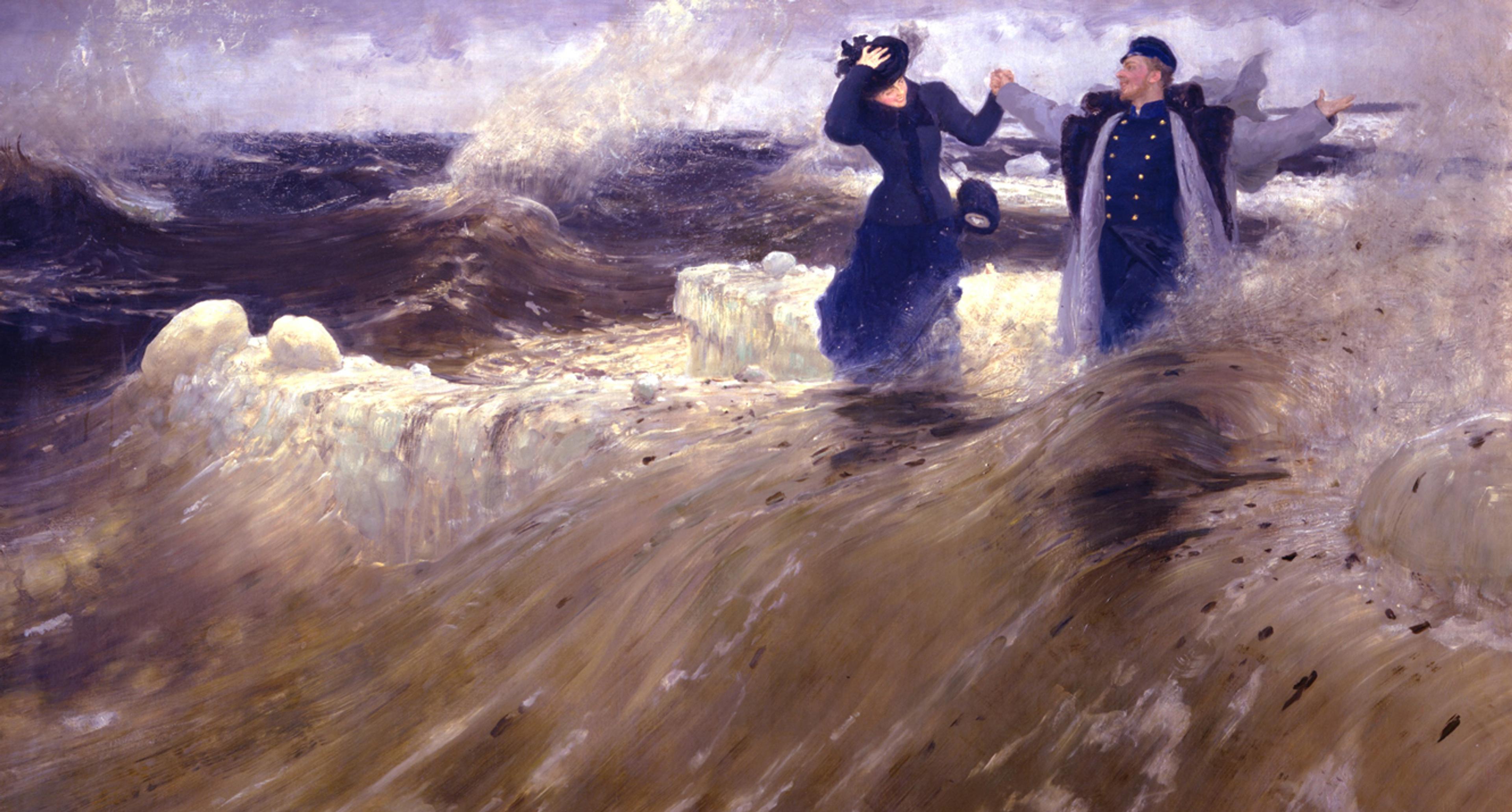The top song on Billboard’s Rhythm & Blues chart in 1967 was Jackie Wilson’s (Your Love Keeps Lifting Me) Higher and Higher. Once (he sang), he had been ‘down-hearted’. Then he found a special girl. Now he’s flying high.
Next, compare the feeling of love in Wilson’s song with that of Odysseus in Homer’s epic the Odyssey. The eponymous hero doesn’t want to fly. When the beautiful goddess Calypso tries to keep him as her bedmate, he turns her down even though she promises him immortality – a place with the gods. He wants to go home, to his wife. He wants to be grounded – quite literally, since the nuptial bed on which he and Penelope make love is constructed around a deep-rooted olive tree.
And then there is the love that the philosopher Carrie Jenkins has for her husband and, at the same time, for her boyfriend, sharing her time with one or the other. She considers hers a form of romantic love, but she knows very well that it is not the sort celebrated by Wilson or Homer. She calls it polyamory.
These examples hardly begin to cover the vastly different feelings that the simple word ‘love’ is supposed to cover. Such variations should call into question the Basic Emotions Theory accepted by the majority of psychologists today. They maintain that there are six or so emotions, most often listed as happiness, sadness, anger, surprise, disgust and fear. These are universal and hardwired, the hard-won products of long evolution. Other emotions are compounds of the basic ones or are not emotions at all.
Note that love is not among them. Love has no one recognisable facial expression, whereas (argue Basic Emotions adherents) each basic emotion is signalled by an invariable facial expression. Some cultures may try to disguise that expression, but it will nevertheless leak out via ‘micro-expressions’.
The Basic Emotions Theory dates back to a study undertaken in the 1960s by the psychologists Paul Ekman and Wallace V Friesen to test their hypothesis that emotions were universally understood ‘in the face’. They chose as their subjects the non-Westernised Fore tribespeople of Papua New Guinea. At first, they simply showed photos of faces posed to express the six basic emotions. But the Fore respondents couldn’t figure out what they were being asked to do. Therefore, Ekman and Friesen had first to make up a story to go with each emotion. For example, the story for the photos of faces sporting a wide grin was: ‘His (her) friends have come, and he (she) is happy.’ After hearing the story, 100 per cent of the Fore adult subjects chose the Happiness face rather than two faces showing (or, rather, posing) Disgust and Anger. And so it went – similarly (if less successfully) – with the other emotions. The researchers concluded that emotions were constant across cultures – basic and universal. This idea pervades numerous psychology labs today. As the scholar Ruth Leys points out in The Ascent of Affect (2017), the theory is particularly attractive to scientists because it leaves out intentionality – something too variable and messy to measure.
But the scientists who use posed faces are overlooking the fact that the original study was obliged to introduce intention – via the stories. What did the lady with the large smile intend? To greet her friends. It was the story that animated the inert photo, not the facial expression per se.
Intentionality is at the heart of the emotion of love; what a person means when he or she ‘loves’ must be expressed in words, tones of voice and gestures. Faces may play a role, but not necessarily. Before Ekman and Friesen, love had most certainly been considered an emotion. Indeed, by leaving it out, the two psychologists were bucking a long tradition that made love not only an emotion but sometimes also the premier emotion. In the 4th century BCE, love was one of 12 passions named by Aristotle (though he knew that he was leaving out many others). In the 13th century CE, Thomas Aquinas made love the prime mover of every emotion. And in the 1960s, Magda Arnold, a pioneer of cognitivism, classified love as a positive ‘impulse’ emotion. For all of these theorists, love was paradigmatic of all the other emotions.
The chief opposition to the Basic Emotions thesis today is led by ‘psychological constructionists’ such as Lisa Feldman Barrett and James A Russell. They argue that both emotions and cognitions are ‘conceptualisations’. As the human brain monitors our internal and external environments, it makes sense of what it perceives by learning repeated patterns and their labels. In the English-speaking world, the brain learns to associate certain sensations and ideations with ‘love’. In other cultures, different patterns are reinforced, connected to different feelings and perceptions, and therefore differently understood and named.
Psychological constructionism helps explain why the Fore were initially confused when presented with some photographs. It also supports the findings of anthropologists that, in other cultures, emotions are not only sorted differently than those in the West but also ‘felt’ in ways Westerners find odd. Thus, the anthropologist Andrew Beatty has written of the ‘hairy’ hearts of some of the Nias tribespeople he came to know during a two-year fieldtrip in Indonesia. In his book Emotional Worlds (2019), Beatty illustrates how two parties negotiated a bride wealth in anticipation of a marriage by using various emotional locutions unfamiliar to him: ‘we feel two-hearted’, we are ‘shrivelled-hearted’, let’s be ‘clear-hearted’.
The contributions of psychological constructionism take us a long way beyond the Basic Emotions thesis, but they leave out the glue that holds together the sensations and ideations: the stories. The brain’s sense-making does not entail simply associating feelings and connecting them with words. It involves finding and creating narratives. These narratives are both cultural givens and, at the same time, they are in a continual process of formation; they undergo modifications (in one’s lifetime, in one’s culture). They crystallise sensations, experiences, thoughts and actions (or, at least, impulses to action). They have an arc, if not always a beginning, a middle and an end. Finally, they imply value judgments: this is the way you/I/we should feel in these circumstances; this is how we should express it. And, conversely: this feeling or way of feeling is wrong, it is hateful, it is manipulative.
Stories are manipulative, for they not only make sense of what we feel but also shape those feelings, even as we struggle to mold them according to our particular needs and understandings. In that sense, they are tools of power as much as they are neutral organisers of the disparate sensations and experiences of our lives.
Western love is not – and has not been – one thing; no doubt the same is true for other cultures too
Anthropologists sometimes find love stories in the cultures that they study, but these stories are generally quite different from those that Western cultures tell – even when (as happens today) Western narratives have infiltrated them. Western culture’s influence is no doubt due to its political, military and economic hegemony. But it is also due to the fact that it invests an extraordinary amount of thought, energy and emotion into love, amore, amour, amor, Liebe – obviously, the English term is only a stand-in for the rest. Love is emoted with hearts, posted on billboards (‘You’ll love our cereal’), promoted on dating sites, printed on Christmas cards, and celebrated on Valentine’s Day. A Google Ngram of the words love and anger (anger being many psychologists’ model emotion) since 1800 shows how love indeed conquers all, especially today.

Frequency of emotion terms in printed books since 1800
The real work is ahead. What does love mean in Western culture? Arnold may have been correct to say that it is an ‘impulse’ emotion, but that is meaningless until one knows what sets off the impulse, the goal that it has, how it is experienced and expressed, the feelings it is associated with, and the moral purchase it claims. And even then, one needs to ask if everyone agrees that the same motives, goals, performances, feelings and ethical values are at work in every case.
As I argue in my book Love: A History in Five Fantasies (2021), Western love is not – and has not been – one thing, and no doubt the same is true for other cultures as well. If Jackie Wilson flew high on love, others (around the same time) were singing that ‘Love ain’t nothing but sorrow.’ And if some (like Percy Sledge) maintain that ‘When a man loves a woman/Can’t keep his mind on nothin’ else,’ polyamorists are glad to have several loves. Still others find love elsewhere, in other stories. These varieties suggest that we live in emotional communities that evaluate, use, abuse and act out emotions in ways that make sense mainly within that community.
To understand the stories that inspire, explain and keep on track these various emotional communities, it is best to look at the long haul: history. Doing so means moving away from the prevalent tendency to deny that the past can shed light on the human heart and brain. That predilection infects not only the Basic Emotions crowd but also, at least as it is now discussed, psychological constructionism, which so far does not consider whence derive the ambient associations between sensations and their conceptualisations. The caretakers who bring up baby and thus who create his/her/their emotional world in the psychological constructionist model are themselves products of their emotional communities. Those emotional communities were not constructed out of nothing but rather created over time with the bits and pieces – variously accepted, rejected and rejiggered – of the stories, experiences and performances of the past.
The past is another country, but at first it may seem nothing like those that anthropologists visit. For anthropologists (like psychologists) have living people in front of them. Historians in the main do not. They have only the writings and materials left behind by human beings. Yet the difference is not so great as some imagine. The psychologist has only what her subject says. Or she may consult her subject’s brain scans, pulse rates and so on; these do not speak and, like the material culture of the past, must be interpreted. Even speech is often opaque, hiding as much as it reveals. In a psychology lab, speech is often highly controlled and directed, and that, too, has problems. Like the forced choice given to the Fore (to decide which story the photo is about from only three options – disgust, anger or happiness), constraints inhibit spontaneity. Anthropologists understand the drawbacks inherent in a laboratory setting. That is why they live with people for many years to figure out what they are saying and doing. Even so, Beatty for one, ever alert to contexts of expression, admits that he never figured out what the Nias meant by having a ‘hairy heart’.
Percy Sledge’s inability to think about anything but his girl tapped into a Western tradition of very long-standing: love as an obsession. Plato knew about it. His Symposium is set at a party with an illustrious group of guests from an earlier generation, including Socrates. Foregoing the usual drunken orgy and dismissing the flute girls, the men (they are all men) agree to take turns speaking about the nature of love. It’s clear that the discussion is implicitly as much about one-upmanship as it is explicitly about eros, and it seems to end, as expected, with the speech of Socrates.
Then, just as the party is about to break up, in comes a gate-crasher. It is Alcibiades, roaring drunk and crazy in love with Socrates. Does the company want to know what love really is? He proposes to tell them. It is feeling your heart leap in your chest, the tears run down your cheeks. It means admiring, desiring and being endlessly frustrated. You realise how wonderful your beloved is and how you can never measure up. You wish you didn’t feel compelled to stick around, but you have to. You’re a slave. Yes! Alcibiades has ‘no idea what to do, no purpose in life; ah, no one else has ever known the real meaning of slavery.’
Alcibiades is the perfect example of the wrong sort of love, according to the lights of Plato’s emotional community. His love is messy and irrational. It turns the right order upside down: in ancient pederasty, an older man falls in love with a young one, takes him under his wing, teaches him morality and bravery, and (yes) has sex with him – though generally not penetrative. But Alcibiades is the handsome youth, and Socrates the ugly old man. Worse, the sort of love Alcibiades is feeling, while virtuous in a woman – think of Penelope, who wept for 20 years as she awaited her husband Odysseus’ return – is absurd in a man. A man should be in control of his passions. Alcibiades is led around by them.
In the context of the ancient world, where a man like Alcibiades had many slaves and was humiliated to feel like one, obsessive love was an embarrassment and the obsessive lover a fool. Percy Sledge universalised his feelings – ‘When a man loves’ means ‘When any man loves’ – because he knew his audience would joyfully identify with him. But no man in the ancient world would joyfully have felt as Alcibiades did. He wasn’t a normal guy but a sick man, the foil to the right sort of love – the kind that transcends human flesh and beauty – that Socrates had just presented in his own speech.
Even made-up stories have real-world impact
But now fast-forward to the south of France in the 12th century, when being in service to another person was the privilege of the elites, and when words of love described the relations between lords and vassals. In that context, Bernart de Ventadorn could happily sing that he is
Better than other troubadours,
For I’m more drawn to loving
And better made for its command.
He’s delighted to be love’s slave, even though his beloved (he tells us) has no more interest in him than Socrates had in Alcibiades. Indeed, he glories in his servitude, priding himself on his fidelity, no matter what:
Good lady, I ask you nothing at all
Except to make me your servant.
In songs of this tradition, obsessive love is painful – either because it is unrequited or because the lady (or lord) is far away. Yet even so, it makes the lover happy. Alcibiades is miserable as he comes to see that he will never measure up to Socrates. But for Bernart, the very feeling of love is proof of his virtue. He measures up because he loves. He’s glad to be miserable.
When, in the 18th century, service was no longer highly valued, obsessive love’s narrative became darker. In Johann Wolfgang von Goethe’s The Sorrows of Young Werther (1774), the eponymous hero is hopelessly in love with Lotte. He constantly thinks how, if only she were with him, he would cover her with kisses. He never stops wearing the outfit that he wore at their first meeting and, when it wears out, he gets another that is identical. Lotte is everywhere in his imagination. He loves her ‘solely, with such passion and so completely’ that he knows nothing except her. He’s crazy, like Alcibiades, but he glories in that craziness. When he kills himself, it is because one must go to any length for love.
The Symposium, Bernart’s poem, Werther: these are fictions. They are ‘made up’ and thus may seem less real than (for example) responses to a psychologist’s questionnaire. But, as Ekman and Friesen learned, even made-up stories have real-world impact. Plato wrote for an audience of philosophers. (Though later on, Socrates’ account of love in the Symposium would become a model for Catholic theologians.) The troubadours entertained southern French nobles and shaped the love poetry of Spain, Italy, England and Germany. Werther was the unfortunate model for many a young man’s suicide in the 18th century. Percy Sledge’s song touched enough people to make it a number-one song in 1966. Obsessive love today reverberates with all these traditions.
But, as we saw at the start of this essay, obsessive love is not the only feeling-idea of love today, nor was it in the past. Consider its near-opposite, polyamory. Already Plato talked about that, in the guise of a speech by Pausanias, who contrasted two sorts of love. The one worthy of praise was utterly attached to one life-long companion (in his view, another man). The one that was ‘shameful’ moved on from person to person – even to women!
Shameful was not, however, how all people in the ancient world considered this sort of love. After all, the gods were said to fall in love seriatim, and on the vases owned by perfectly respectable ancient Greeks (and, later, on the walls of perfectly respectable ancient Romans), satyrs were depicted merrily disporting with nymphs. In the 1st century BCE, Ovid wrote happily of the great joy of falling in love, falling out of love, and moving on. But in the next century, the Christian Church simply voided this sort of love. It was not love. The best sort of love was for God. Second best was love in marriage. All else was lust.
Feelings come in untidy combinations that need to be put into narrative order to make sense
Medieval love poets did not agree with the Church. In that very fact, we see the variety of medieval emotional communities. They are even more obvious in the 16th century, when polyamorous sentiments enjoyed a heyday. This was in part the effect of the European attitude toward the conquests of ‘virgin’ territory – the Americas were as ripe for the taking as one’s mistress, and discovery was all the rage. In part, too, it was a product of the weakening hold of the Church; praising and practising ‘lust’ was a good way to protest against its strictures. Equally important was the Renaissance’s new appreciation of ancient art and literature and all the polyamory that they seemed to imply (forgetting that many people in the ancient world implicitly agreed with Pausanias). Finally, the printing press served, as social media does today, to echo and amplify minority feeling-ideas.
Thus, the ever-satirical Pietro Aretino (1492-1556) celebrated the many loves of a courtesan named Nanna. In a nunnery, she has a fleet of lovers, until one of them, consumed by jealousy, nearly skins her alive. Her mother saves her, only to find her a husband. After that, like all the other wives, Nanna happily takes many lovers, finding them especially abundant among monks and clerics. At last, she becomes a courtesan, the best life of all, for she may not only love all the men she likes but also make money at it.
Today’s polyamory does not rely on a satirical story. Rather, it is constructed (among other things) on notions of the sexual self that were elaborated by Sigmund Freud and others at the turn of the 20th century; on the science of hormones that was discovered around the same time; and (in some quarters) on the idea that consenting adults may arrange their intimate lives however they like. But even today it includes the frisson of rebellion against majority norms.
Feelings do not come prepackaged in boxes labelled with names such as ‘love’. They come in untidy combinations that need to be put into narrative order to make sense. Some sequences come from within us, perhaps dictated by our hormones, certain are influenced by our individual ways of thinking and doing. But many of them come from without, from the narratives we hear and see and read. What is love? It’s all in the story.
To read more about the history of emotions, visit Psyche, a digital magazine from Aeon that illuminates the human condition through psychology, philosophy and the arts.






